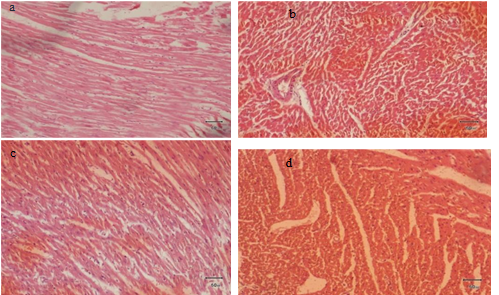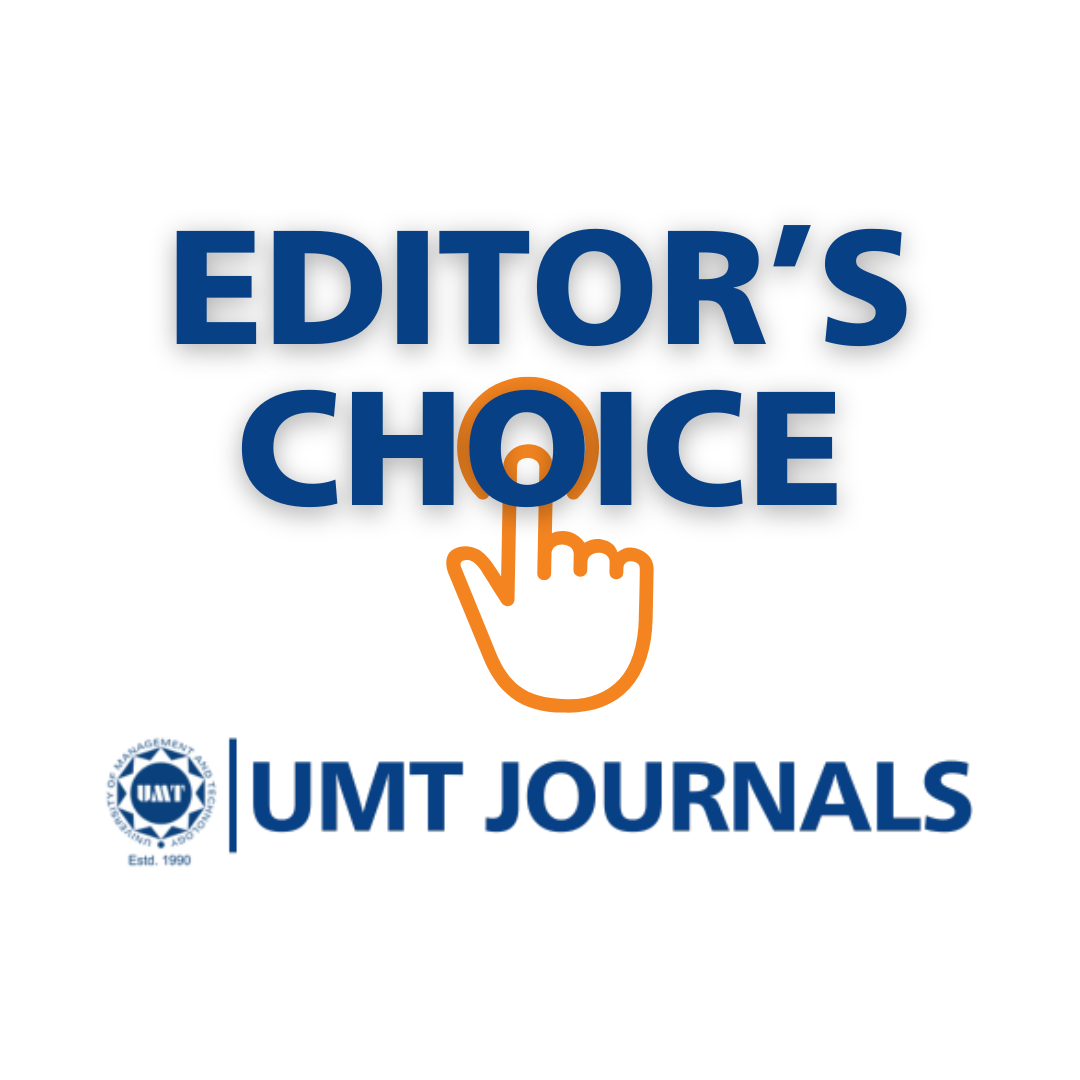Cardioprotective Effect of Allium sativum on C-Reactive Protein and Cardiac Structure in Rabbits
Abstract
 Abstract Views: 0
Abstract Views: 0
Background. Diet and lifestyle comprise major risk factors in the development of various human diseases, including atherosclerosis. C- Reactive protein (CRP) is one of the possible markers of vascular inflammation. High CRP levels can predict the long-term risk of cardiovascular diseases. The current study aimed to evaluate the ameliorating effect of Allium sativum against high-fat diet-induced damage to heart structure and CRP levels.
Methodology. A total of 16 rabbits were randomly assigned to 4 groups (n=4 each). Group 1 served as the control group and it was fed with standard diet. Whereas, the remaining 3 groups were experimental groups. Group 2 was fed with high fat diet, Group 3 was fed with high fat diet supplemented with 5% Allium sativum, and Group 4 was fed with high fat diet supplemented with 10% A. sativum. The experiment was conducted for 4 weeks.
Results. Mild myocardial congestion was observed in the heart tissues of rabbits in Group 2 fed with high fat diets. Group 3 and Group 4, fed with 5% and 10% A. sativum respectively and with a high fat diet, showed no myocardial congestion. This indicates the cardio-protective potential of A. sativum. Group 2 showed a significant (p<0.05) increase in CRP levels as compared to control.
Conclusion. The results showed that A. sativum demonstrated a beneficial effect on both heart structure and CRP levels, suggesting its potential as an adjunct therapy for cardiovascular diseases.
Downloads
References
Batiha GE-S, Beshbishy AM, Wasef LG, et al. Chemical constituents and pharmacological activities of garlic (Allium sativum L.): a review. Nutrients,2020;12(3):e872. https://doi.org/10.3390/nu12030872
Tikhomirova I, Muravyov A. Hydrogen sulfide in the cardiovascular system: a small molecule with promising therapeutic potential. J Cell Biotechnol. 2023;9(2):93–115. https://doi.org/10.3233/JCB-230098
Nguyen TVA, Bui DH, Le HL. Potent inhibitory effect on human platelet aggregation of the aerial part of Canna edulis. Vietnam J Sci Technol. 2024;62(3):425–434. https://doi.org/ 10.15625/2525-2518/19013
Tomoda H, Aoki N. Prognostic value of C-reactive protein levels within six hours after the onset of acute myocardial infarction. Am Heart J. 2000;140(2):324–328. https://doi.org/ 10.1067/mhj.2000.108244
Wong ND, Sattar N. Cardiovascular risk in diabetes mellitus: epidemiology, assessment and prevention. Nat Rev Cardiol. 2023;20:685–695. https://doi.org/ 10.1038/s41569-023-00877-z
Aikawa M, Sugiyama S, Hill CC, et al. Lipid lowering reduces oxidative stress and endothelial cell activation in rabbit atheroma. Circulation. 2002;106(11):1390–1396. https://doi. org/10.1161/01.CIR.0000028465.52
Puppala S, Spradling-Reeves KD, Chan J, et al. Hepatic transcript signatures predict atherosclerotic lesion burden prior to a 2-year high cholesterol, high fat diet challenge. PLoS ONE. 2022;17(8):e0271514. https://doi.org/10.1371/journal.pone.0271514
JuŸwiak S, Wójcicki J, Mokrzycki K, et al. Effect of quercetin on experimental hyperlipidemia and atherosclerosis in rabbits. Pharmacol Rep. 2005;57(57):604–609
Lumeng CN, Saltiel AR. Inflammatory links between obesity and metabolic disease. J Clinic Inves. 2011;121(6):2111–2117 https://doi.org/10.1172/JCI57132
Zeng H, Vaka VR, He X, Booz GW, Chen JX. High‐fat diet induces cardiac remodelling and dysfunction: assessment of the role played by SIRT 3 loss. J Cell Molecul Med. 2015;19(8):1847–1856. https://doi.org /10.1111/jcmm.12556
Alarcon G, Roco J, Medina M, Medina A, Perel M, Jerez S. High fat diet-induced metabolically obese and normal weight rabbit model shows early vascular dysfunction: Mechanisms involved. Int J Obes. 2018;42(9):1535–1543 https://doi.org /10.1038/s41366-018-0020-6
Keihanian F, Moohebati M, Saeidinia A, Mohajeri SA, Madaeni S. Therapeutic effects of medicinal plants on isoproterenol-induced heart failure in rats. Biomed Pharm. 2021;134:e111101. https://doi.org/ 10.1016/j.biopha.2020.111101
Hussain J, Wei X, Xue-Gang L, et al. Garlic (Allium sativum) based interplanting alters the heavy metals absorption and bacterial diversity in neighboring plants. Sci Rep. 2021;11(1):e5833 https://doi.org/ 10.1161/01.CIR.0000028465.52694
El-Sheakh AR, Ghoneim HA, Suddek GM, Ammar ES. Attenuation of oxidative stress, inflammation, and endothelial dysfunction in hypercholesterolemic rabbits by allicin. Can J Physiol Pharmacol. 2016;94(2):216–224 https://doi.org/ 10.1139/cjpp-2015-0267
Ghyasi R, Mohaddes G, Naderi R. Combination effect of voluntary exercise and garlic (Allium sativum) on oxidative stress, cholesterol level and histopathology of heart tissue in type 1 diabetic rats. J Cardiovasc Thoracic Res. 2019;11(1):61–67. https://doi.org/10.15171/jcvtr.2019.10
Bombicz M, Priksz D, Varga B, et al. Anti-Atherogenic properties of allium ursinum liophylisate: impact on lipoprotein homeostasis and cardiac biomarkers in hypercholesterolemic rabbits. Int J Molecul Sci. 2016;17(2):1284–1290 https://doi.org/10.3390/ijms17081284

Copyright (c) 2025 Irum Naureen, Iza Tahreem, Aisha Saleem , Muhammad Naeem

This work is licensed under a Creative Commons Attribution 4.0 International License.
BSR follows an open-access publishing policy and full text of all published articles is available free, immediately upon publication of an issue. The journal’s contents are published and distributed under the terms of the Creative Commons Attribution 4.0 International (CC-BY 4.0) license. Thus, the work submitted to the journal implies that it is original, unpublished work of the authors (neither published previously nor accepted/under consideration for publication elsewhere). On acceptance of a manuscript for publication, a corresponding author on the behalf of all co-authors of the manuscript will sign and submit a completed the Copyright and Author Consent Form.









